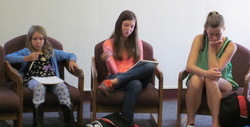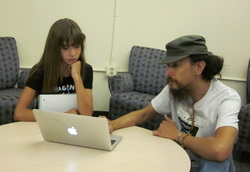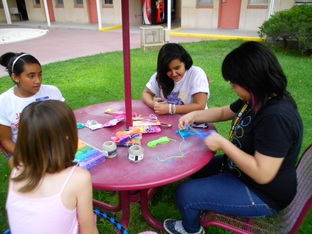Chapter 3: Cyborg Writers and Teachers
- Think sustainably. Keeping costs down, by embracing freeware and working with community sponsors and partners, automatically makes your program more likely to be repeated. Another vital step is to identify other volunteers that may continue your outreach work if you must leave it (like Almjeld did for her career move) or who might be inspired to take up their own community engagement work based on behind-the-scenes work with your project.
|
- Expect the unexpected. You can plan endlessly and there still will always be unexpected things that happen -- computers crash, someone loses a backpack, someone doesn’t show up, nightmares keep a room of participants up all night, and so on. Adapting a “roll with it” philosophy will ease stress for you, your volunteers, and the writers at your camp.
- Encourage active participation. You'll need to provide some explanation and guidance for how to complete activities, especially when asking participants to use new technologies. However, don't hold onto the reigns too tightly. Give participants plenty of space and time to play and experiment on their own -- or to help one another troubleshoot and solve problems. Sometimes the best learning happens when people have agency to try things on their own.
|


